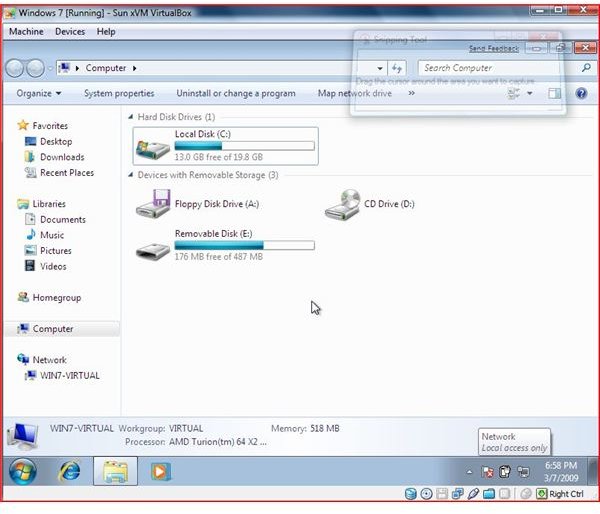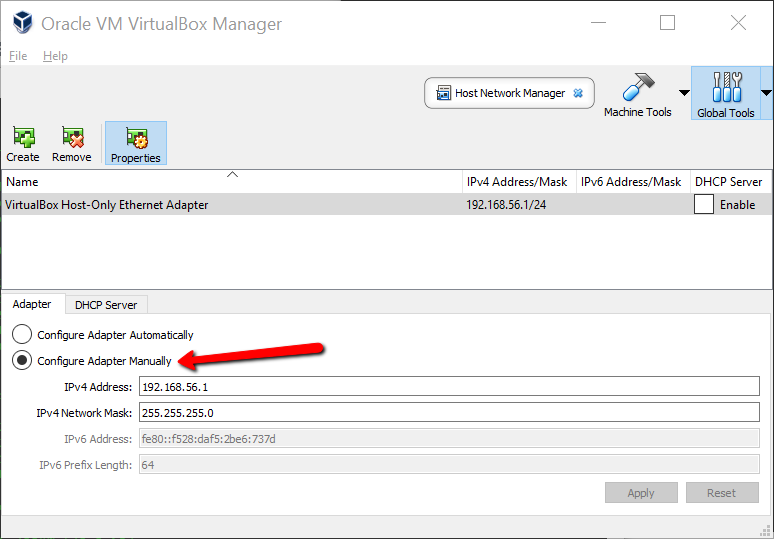

- #VIRTUALBOX NETWORK SETTINGS INSTALL#
- #VIRTUALBOX NETWORK SETTINGS FULL#
- #VIRTUALBOX NETWORK SETTINGS WINDOWS 10#
- #VIRTUALBOX NETWORK SETTINGS DOWNLOAD#
Mount the Security Onion ISO file so our VM can boot from it to install Linux. Click “Create” and your Security Onion VM will be created.Īt this point, you can click “Settings” for your new virtual machine so we can get it configured. For disk size, you’ll want at least 200GB so you have enough capacity for retrieving/testing packet captures and downloading system updates. Once you’ve settled on the storage allocation, click “Continue” and provide a name from your hard disk image file and specify the location where you want the disk file to be created if other than the default location. If you happen to be running a dedicated sensor in a virtual machine, I would suggest using “Fixed size,” which will allocate all of the disk space you define up front and save you some disk performance early on. Specify “Create a virtual hard drive now” then click “Create” to choose the hard drive file type “VDI (VirtualBox Disk Image)” and “Continue.” For storage, we have the options of “Dynamically allocated” or “Fixed size.” For a client virtual machine, “Dynamically allocated” is the best choice as it will grow the hard disk up to whatever we define as the maximum size on an as needed basis until full, at which point Security Onion’s disk cleanup routines will work to keep disk space available. Provide a name for the virtual machine (“Security Onion” for example) and specify the type (“Linux”) and version (this could be CentOS/RedHat or Ubuntu depending on which version you’re installing), then click “Continue.” We’ll next define how much memory we want to make available to our virtual machine based on the Hardware Requirements section. To verify what files are created for the VM, go to C:\Users\\VirtualBox VMs and verify all files.First, launch VirtualBox and click the “New” button. In each case, verify and/or edit settings. To verify and edit the different settings available in the VirtualBox VM, click on the virtual machine and select Settings. In the case of a linked clone, it won’t copy the virtual hard disk files but a new virtual machine will be tied to the original virtual hard disk files.
#VIRTUALBOX NETWORK SETTINGS FULL#
A full clone will create an exact copy of the original machine, and it will include all virtual hard disk files too in the process. We will select a Full Clone and not a linked clone. Figure 6: System Settings Figure 7: VirtualBox display settings Figure 8: Network Settings Provide the new VM’s name and click on Next.

Go to the left sidebar and click on Clone. Once the virtual machine is ready and we want to preserve the installation (or if we want to create a similar type of virtual machine), we can clone it. In the startup disk, provide the CentOS 6.7 ISO.Ĭlick on Start and follow the rest of the process for a normal CentOS installation. You will now have a newly created virtual machine in VirtualBox on the desktop.Ĭlick on Start. Keep the file location and size as it is. Select a dynamically allocated size for efficiency as it will use space only as per requirements. Select the hard disk file type as VDI-VirtualBox disk image.Ĭlick on Next. Configure the settings for the hard disk in our case, we will select ‘Create a Virtual Hard Disk’ now. In our case, we will create a CentOS 6.7 virtual machine.Ĭlick on Next and select the memory size (in MB) for the CentOS 6.7 virtual machine.Ĭlick on Next again. Provide a name for the virtual machine, select the operating system type, and select the version. To create a virtual machine in VirtualBox, click on the New button. Figure 4: Virtual Box ISO Configuration for CentOS 6.7 Figure 5: Virtual Box CentOS Installation Table 1: A comparison between VirtualBox, Xen, KVM and VMware Player We are now ready to create a virtual machine in the VirtualBox. Once the installation finishes successfully, you will get the VirtualBox dashboard. Once you are ready to install, click on the Install button.Ĭlick on the checkbox if you want to start VirtualBox after installation. There will be a warning regarding network interfaces, as the installation will reset the network connection.

Read the instructions in each dialogue box and click on Next.

#VIRTUALBOX NETWORK SETTINGS DOWNLOAD#
In our case, we will download the installation package of VirtualBox 5.1.6 for Windows hosts x86/amd64. VirtualBox platform packages are released under the terms of the GPL version 2. Go to and download the installation packages.
#VIRTUALBOX NETWORK SETTINGS WINDOWS 10#
Installation and configuration of VirtualBox on Windows 10 The main features of Virtual Box are shown in Figure 1. Figure 1: Features of Virtual Box Figure 2: Virtual Box: Creating a VM Figure 3: Virtual Box: VM Created It also supports various hardware such as multi-screen resolutions, USB device support, built-in iSCSI support, ACPI support, and guest multi-processing.


 0 kommentar(er)
0 kommentar(er)
